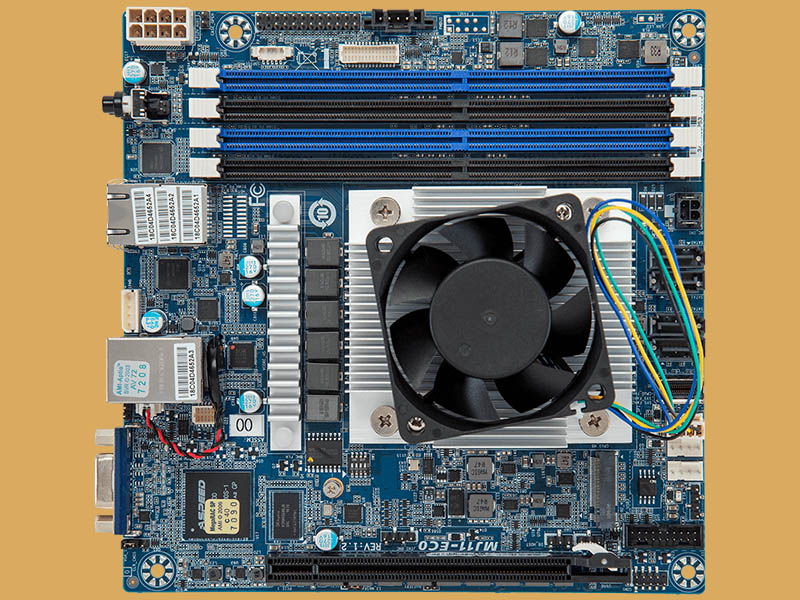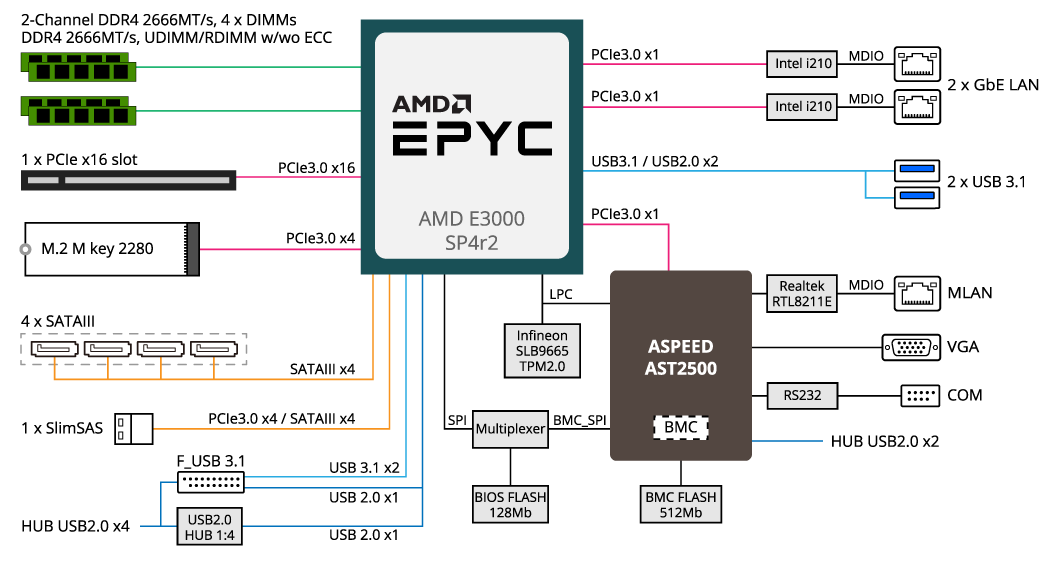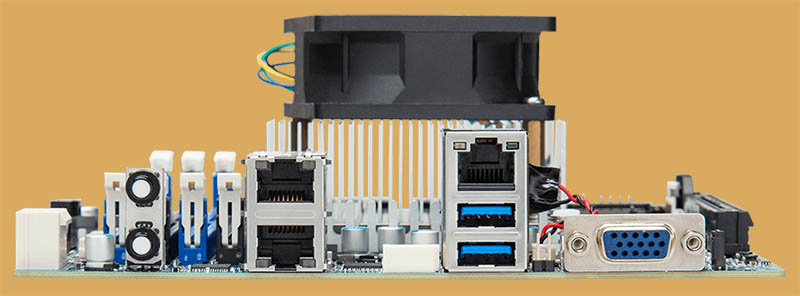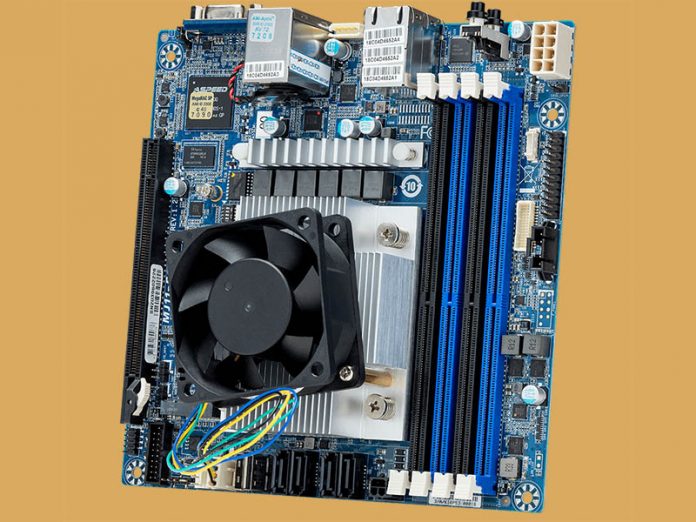Gigabyte has a new embedded motherboard. The Gigabyte MJ11-EC0 is a mITX platform built around an AMD EPYC 3151 processor. You can read our AMD EPYC 3151 Benchmarks and Review for more information. This new platform slots into a common form factor we have seen with these chips.
Gigabyte MJ11-EC0
The motherboard itself looks a lot like the Supermicro M11SDV-4C-LN4F we reviewed. Gigabyte is using a mITX form factor and also has had to remove the ATX 24-pin power connector to fit everything into this small space.

With this system we get a PCIe Gen3 x16 slot and a x4 M.2 slot for NVMe SSDs. Something different that Gigabyte is doing versus Supermicro is that Gigabyte is adding an additional SlimSAS connector that handles an extra 4x SATA ports for a total of eight.

Another big difference between this offering and the Supermicro offering is networking. Gigabyte is using lower-cost dual-port Intel i210 networking whereas Supermicro is using higher-end quad-port i350. While one loses features and bandwidth, Gigabyte’s implementation is less costly. The AMD EPYC 3000 series has built-in 10GbE but given the feature level of AMD’s NICs, we have seen few designs utilizing that feature instead focusing on external NICs even if that means they are 1GbE only.

Two other quick points to mention. First, the heatsink on the unit is absolutely massive. It seems as though Gigabyte designed this heatsink and fan unit to be run passively without the fan for traditional enclosures but with a fan for some enclosures that do not have great airflow. Ther other item to note is that Gigabyte’s rear I/O is shifted more towards the center of the board versus starting closer to the top of the motherboard. In the embedded space, this matters for some customers.
Final Words
Overall, it is great to see a new entry into the embedded space. As Arm competition heats up and Intel readies its next-generation Ice Lake-D platforms, we will get better offerings. What is clear is that at some point AMD, and its partners such as Gigabyte will need to release new parts. In the embedded space, however, longevity matters so it is very common to have 7-10 year product cycles rather than the 1-2 year on the desktop and mobile side and 1.5-4 years for mainstream servers. Gigabyte offering another option for AMD EPYC 3000 series platforms is a good thing for the market.





What exactly is lacking in AMD’s builtin ethernet ports? I don’t think I’ve heard of a single design that uses them which means manufacturers/engineers are deciding it’s worth spending more to use a different solution than the one baked into the SoC. Anybody know why these are wholly rejected?
That x16 slot appears to be only 4 lanes electrical based on the overview and support documentation on the Gigabyte site.
+1 An analysis about this topic would be amazing. And something i guess many here would love to see too..
@podperson
I think you’re confusing the M.2 slot
See direct from Gigabyte
1 x PCIe x16 (Gen3 x16 bus) slot
1 x M.2 slot:
– M-key
– PCIe Gen3 x4
– Supports NGFF-2280 cards
@randomgenericdude
while you are correct, and the specification page for this board on Gigabyte’s web site indeed states so, the overview page for this board states incorrectly right at the beginning: “1 x PCIe Gen3 x16 slots with x4 bus”. So, it’s less @podperson confusing something, but Gigabyte’s own corporate product website being confused. :)
i think is great for home nas
whats is the price of motherboard ?
I really hope they can implement the 10GbE solution from AMD. I literally am waiting for such a product, EPYC with 10GbE and a GPU all in a mTX form factor
Better question : Where can I buy one?